

Outdoor Math Fun: Counting, Measuring, and Sorting in Nature
Math is all around us—hidden in the petals of a flower, the ripples of a pond, and the towering trees in a forest. For young children, learning math doesn’t have to be confined to a classroom or worksheets. Through outdoor learning, children can experience math in a hands-on, play-based way, making numbers, patterns, and problem-solving more meaningful and engaging.
Spring is the perfect time to take learning outside! By incorporating counting, measuring, and sorting into nature-based play, children develop a strong foundation in early numeracy while also fostering curiosity, creativity, and a love for the outdoors.
The Benefits of Outdoor Math Learning
Taking math outdoors offers numerous developmental benefits, including:
- Hands-on Learning: Children engage their senses while exploring math concepts in real-world contexts.
- Physical Development: Outdoor activities encourage gross and fine motor skill development.
- Problem-Solving Skills: Nature-based math challenges help children think critically and explore solutions.
- Confidence and Independence: Self-directed play supports independent learning and decision-making.
Encouraging children to use math in their everyday outdoor experiences fosters a lifelong love for learning. Here are some exciting ways to integrate counting, measuring, and sorting into nature play!
Counting in Nature
Counting naturally occurs when children explore the outdoors. With just a little guidance, you can turn a simple nature walk into a fun math adventure!
Nature Scavenger Hunt: Ask children to collect a certain number of leaves, rocks, flowers, or sticks as they explore. "Can you find five yellow flowers?" or "Let’s gather ten smooth pebbles!"
Counting with Footsteps: Have children count how many steps it takes to reach a tree, playground, or other landmark. They can compare their steps with a friend’s to see who took more or fewer!
Animal and Insect Counting: Observe birds, butterflies, or ants and count how many you see in a given area. This activity also promotes observation skills and appreciation for wildlife.
Jumping Number Line: Draw numbers on the ground with chalk or place numbered leaves on the grass, then have children hop from one number to another, practicing number recognition and sequencing.
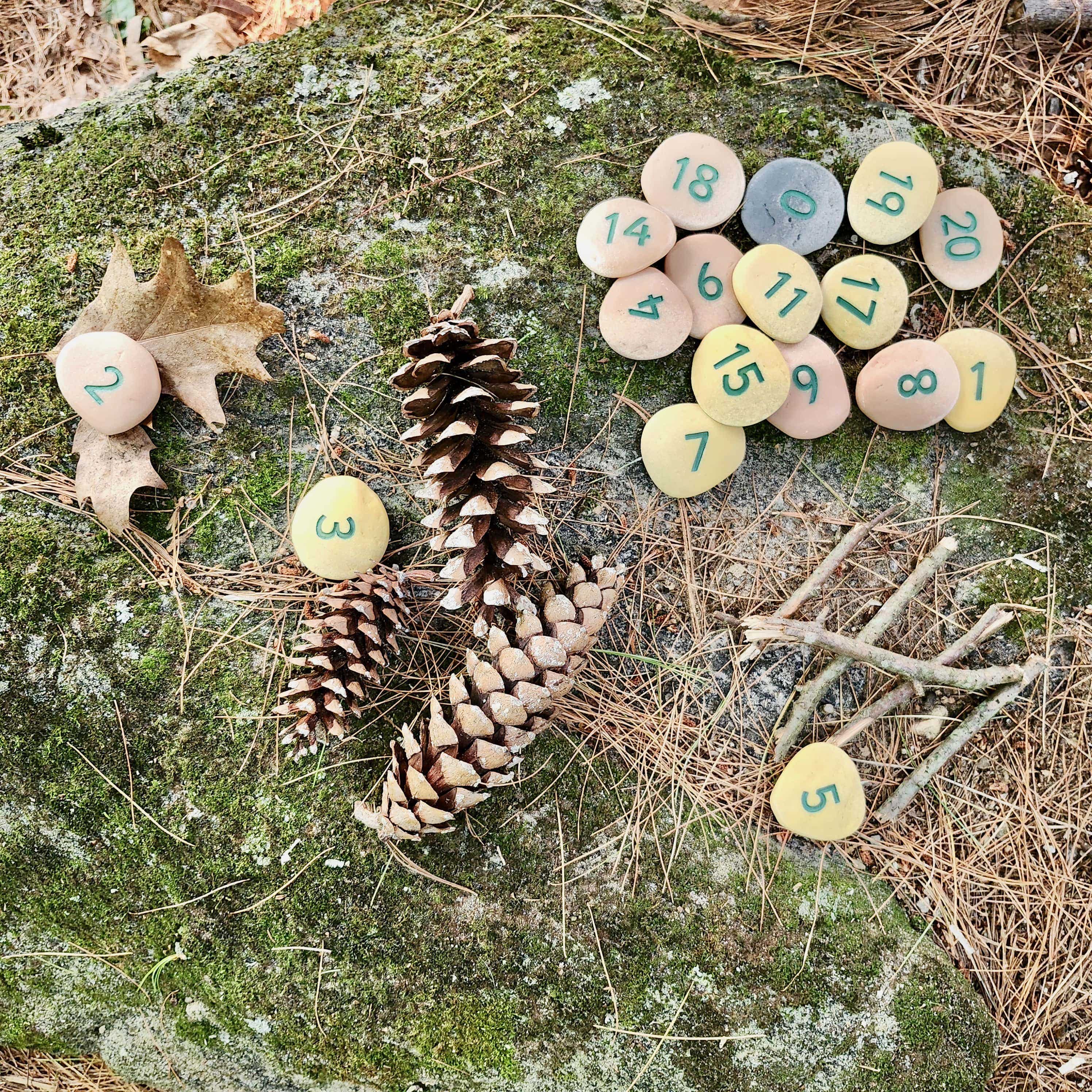

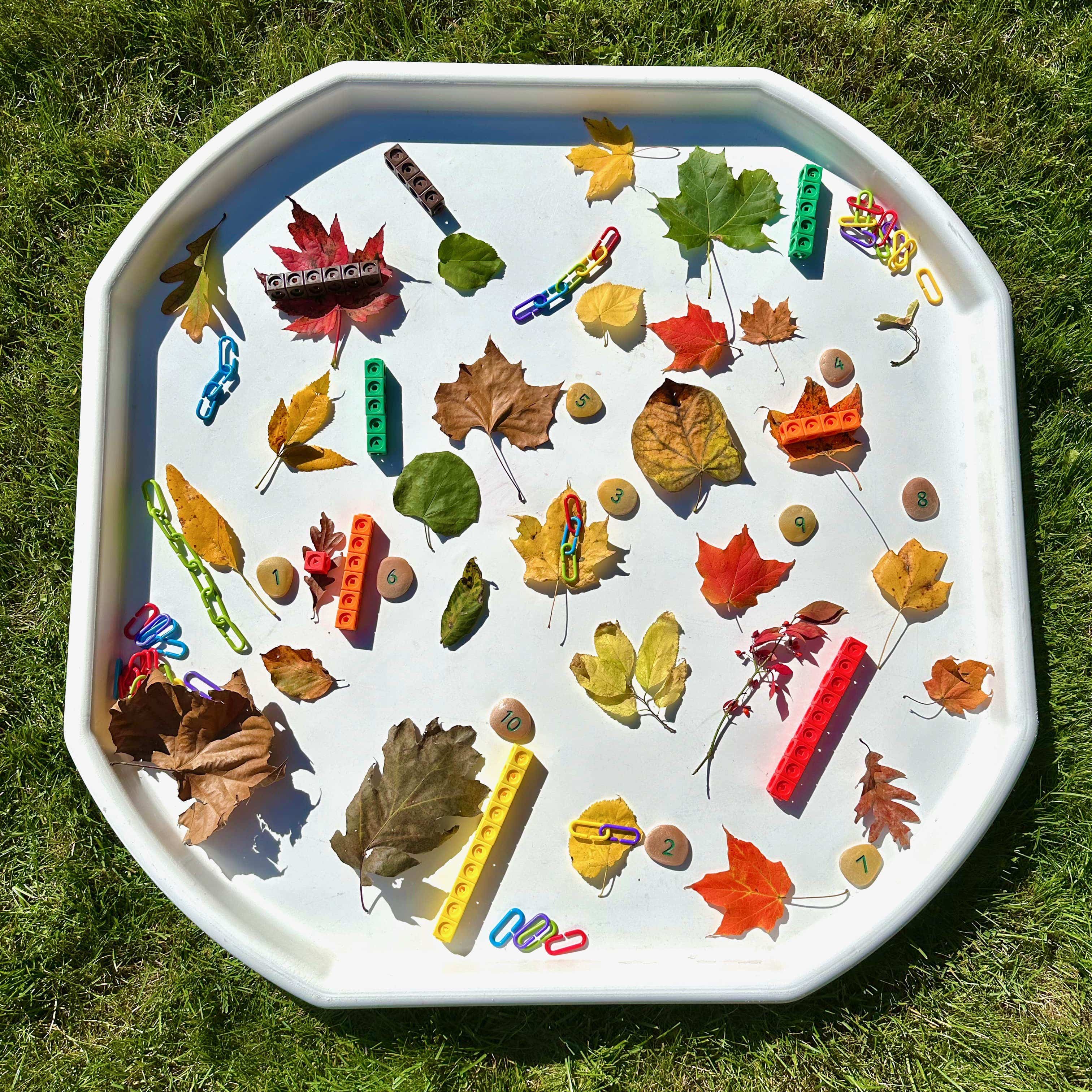

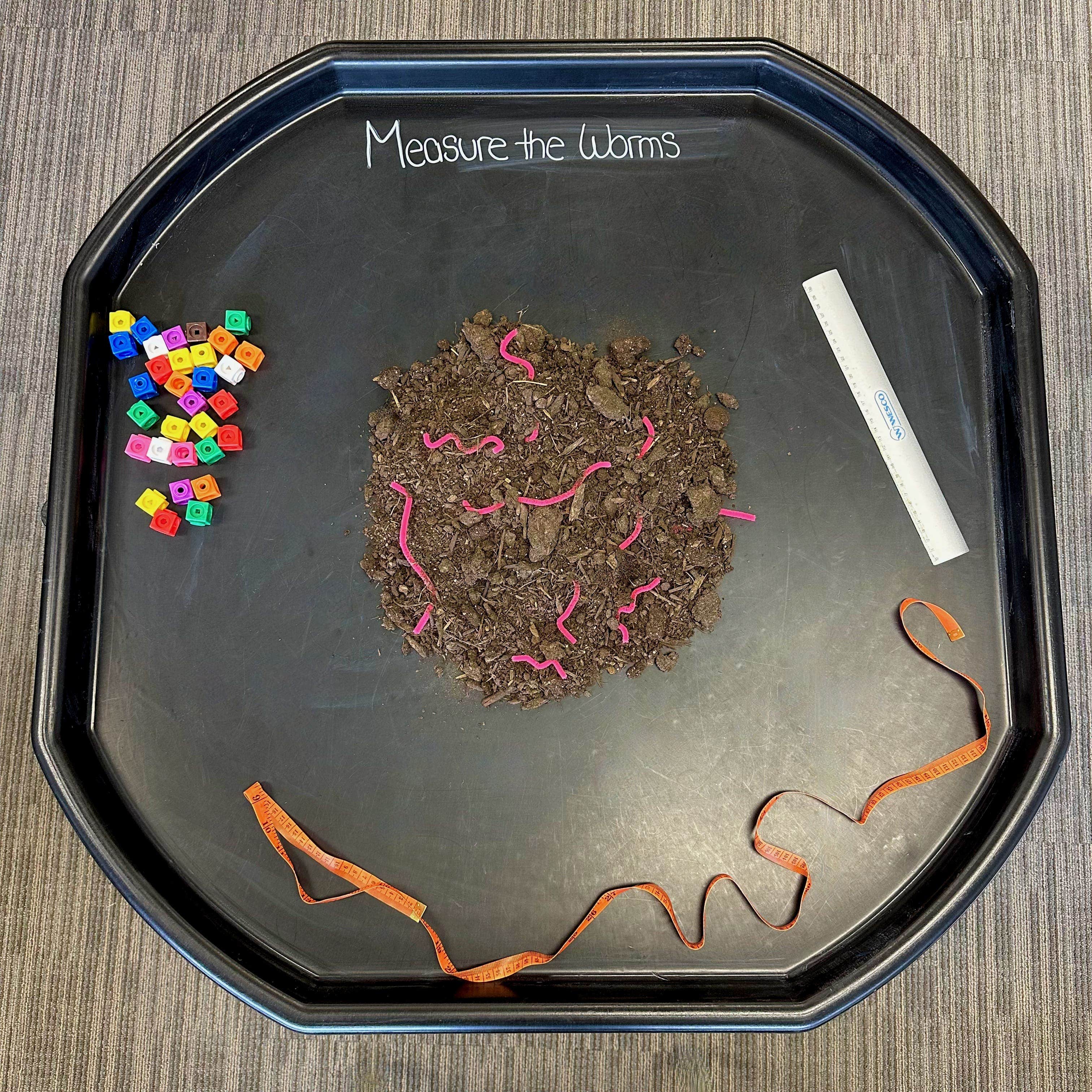

Measuring in Nature
Introducing measurement concepts through outdoor activities helps children grasp size, length, weight, and volume in a tangible way.
Stick Measuring: Find sticks of different lengths and compare them. Children can arrange them from shortest to longest, estimate their lengths, or even measure using non-standard units like “hand spans” or “footsteps.”
How Tall Am I? Have children measure themselves against trees, flowers, or playground structures. You can also use string or ribbon to mark their height and compare it over time.
Water Play and Volume: Use buckets, cups, or natural materials like shells to pour and compare different amounts of water. Ask children, “Which container holds more water?” or “How many scoops fill this cup?”
Shadows and Sun Measurement: Encourage children to measure their shadows at different times of the day and compare the changes. This introduces them to early STEM concepts like time and position of the sun.
Sorting and Patterns in Nature
Sorting and pattern recognition are fundamental math skills that can be easily incorporated into outdoor play.
Leaf and Rock Sorting: Collect leaves, rocks, or flowers and sort them by shape, size, or colour. Ask, “Which pile has the most? Which has the least?”
Creating Patterns with Natural Items: Arrange pinecones, sticks, and flowers in repeating patterns (e.g., rock-leaf-rock-leaf) and encourage children to continue or create their own patterns.
Sorting by Texture: Let children explore and sort items based on texture—smooth, rough, bumpy, soft, or hard. This also enhances their sensory development.
Bug Classification: Observe and group insects by type, size, or colour. This can be a fun way to incorporate early science concepts alongside math learning.


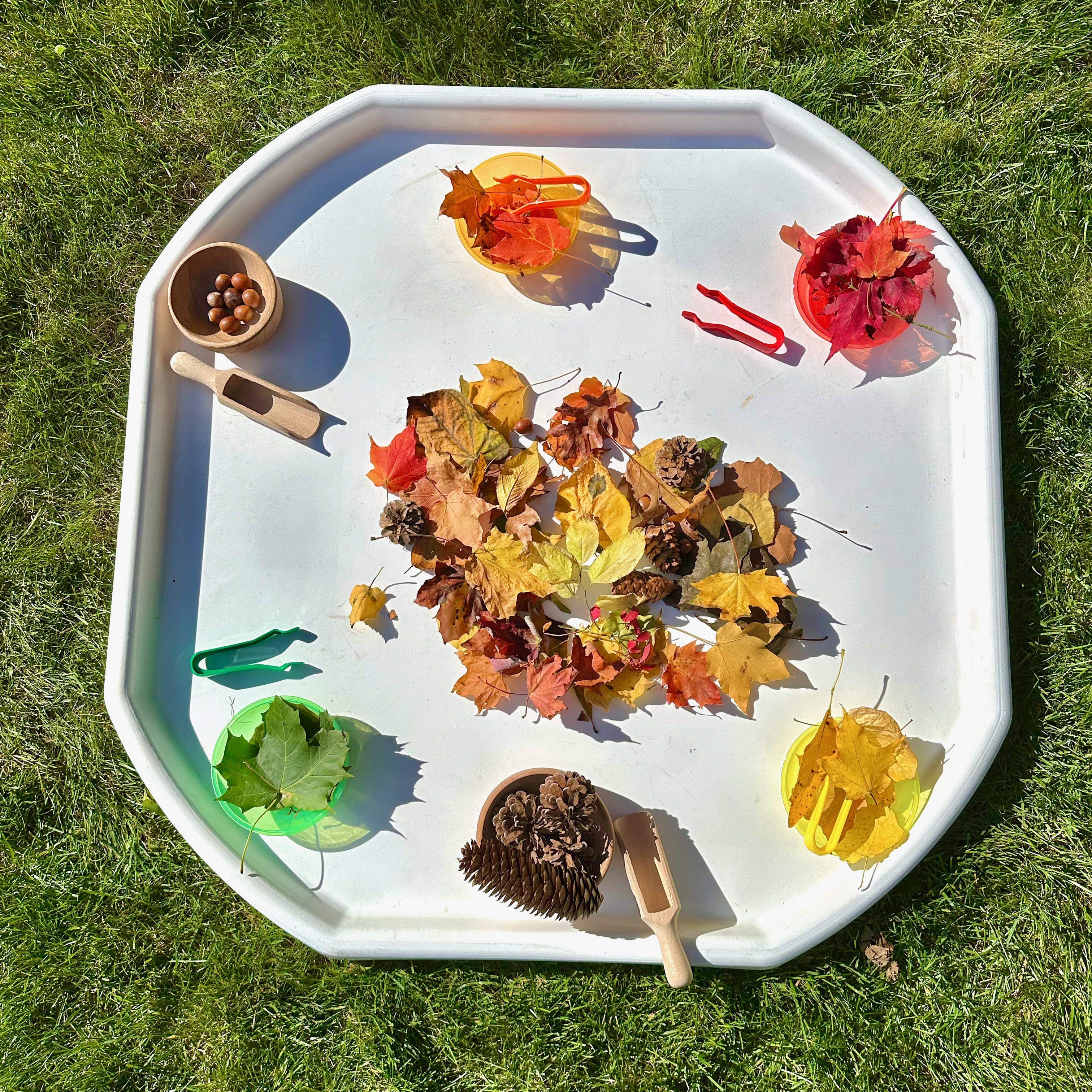

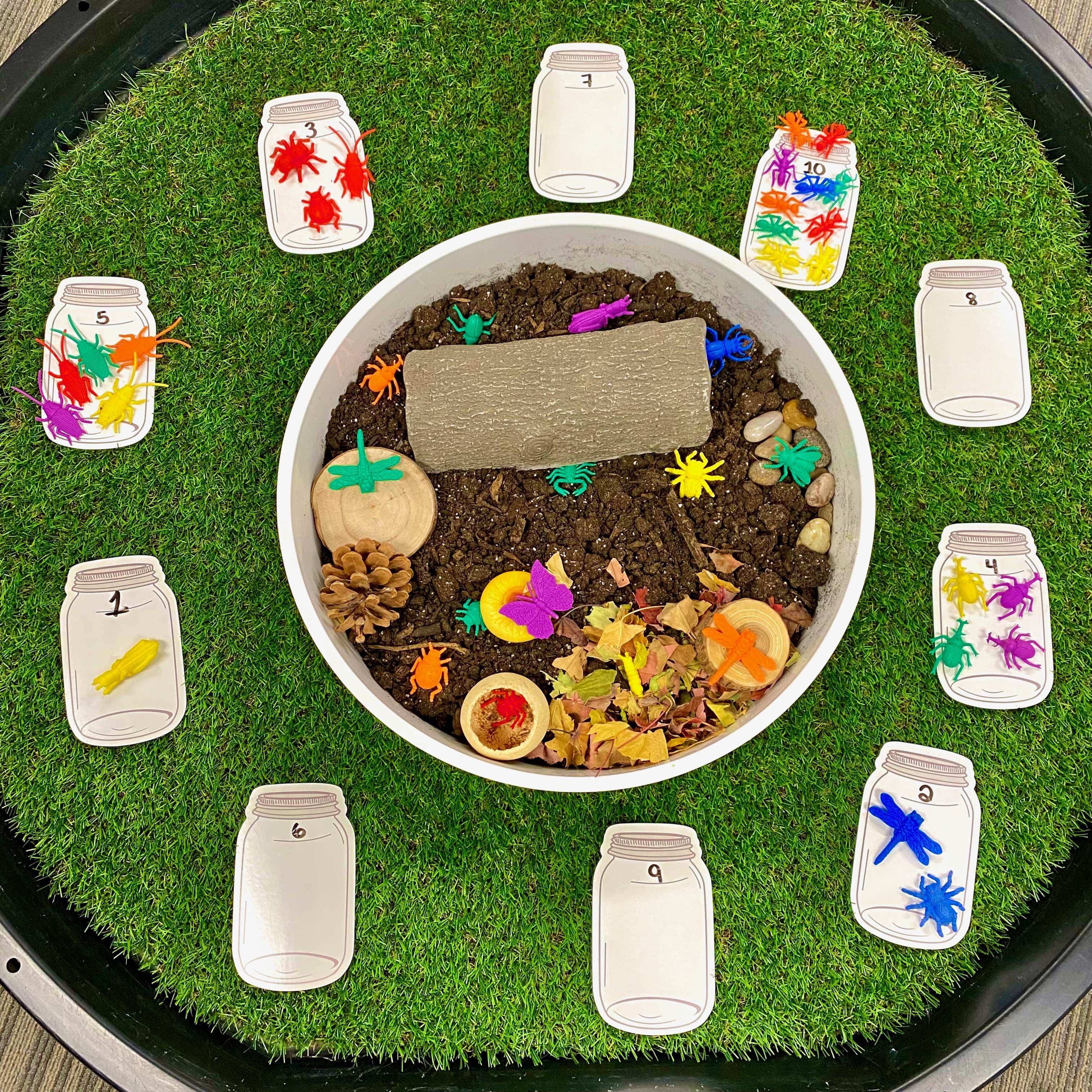

The key to making outdoor math fun is letting children take the lead! Rather than structuring lessons, create opportunities for open-ended exploration and problem-solving.
Ask Thought-Provoking Questions:
- "What do you notice about these rocks?"
- "How can we measure how deep this puddle is?"
- "Which stick do you think is the longest? How can we check?"
Provide Simple Materials:
- Chalk for number games
- String or ribbon for measuring
- Baskets for collecting and sorting
- Buckets and cups for volume experiments
Celebrate Curiosity!
Encourage children to make their own discoveries and connections between math and the world around them. Whether they’re counting flower petals, measuring their footprints in the sand, or sorting pinecones by size, they are developing essential numeracy skills in a joyful, meaningful way.
Outdoor math play fosters curiosity, hands-on exploration, and meaningful learning experiences. By integrating counting, measuring, and sorting into everyday outdoor activities, children not only develop essential math skills but also build a deeper connection to nature.
So, the next time you step outside, take a moment to count, measure, and sort—because math is everywhere! How do you incorporate math into outdoor play? Share your favourite activities with us!

